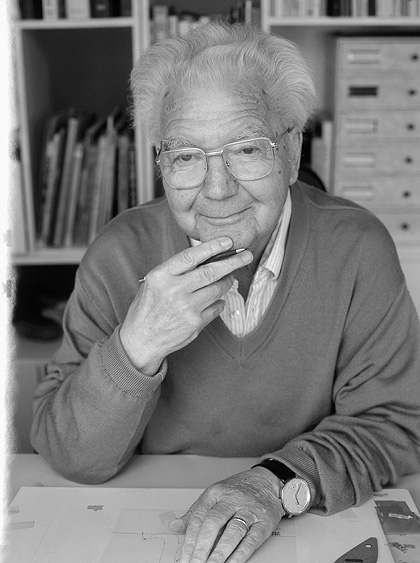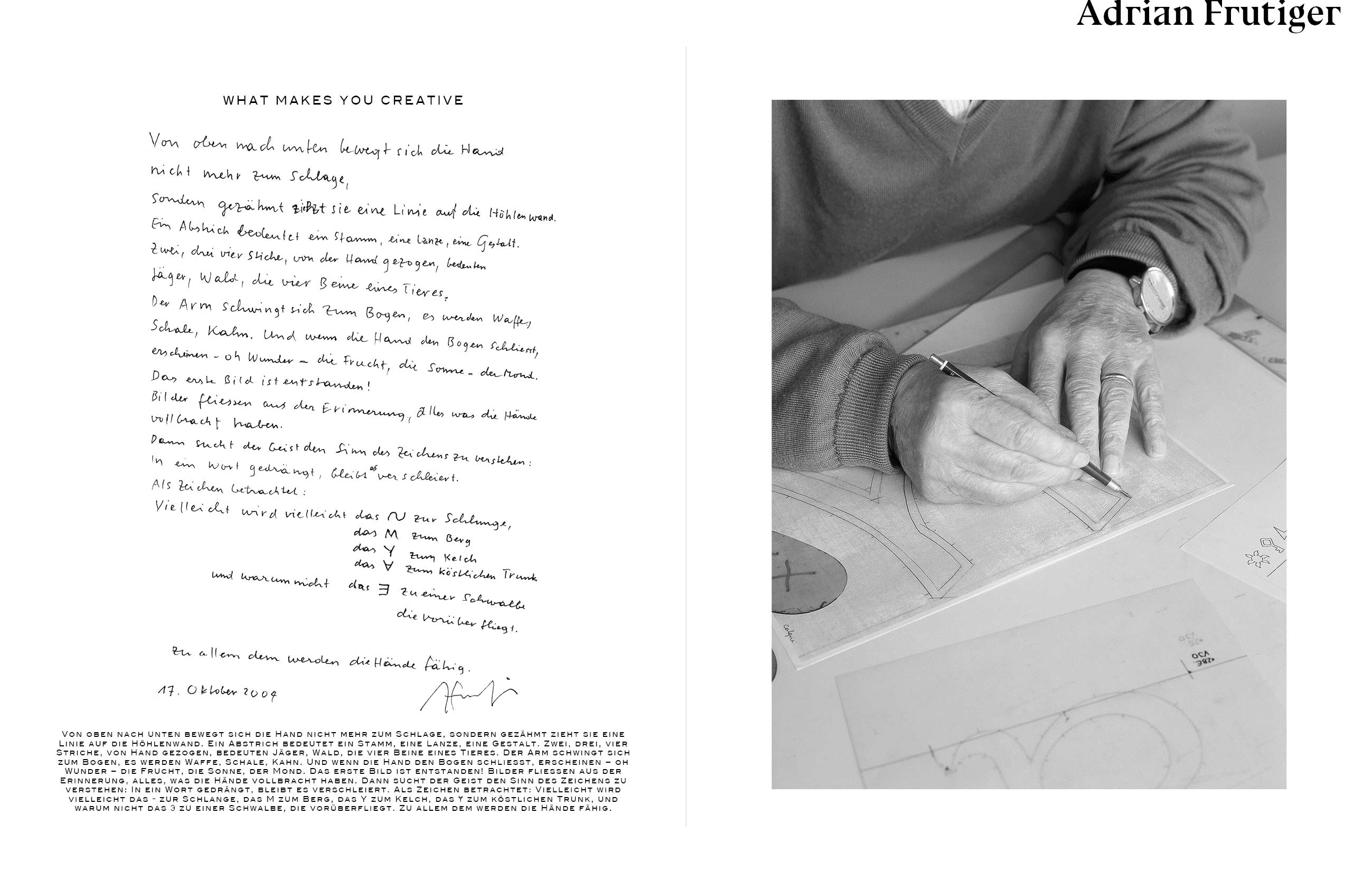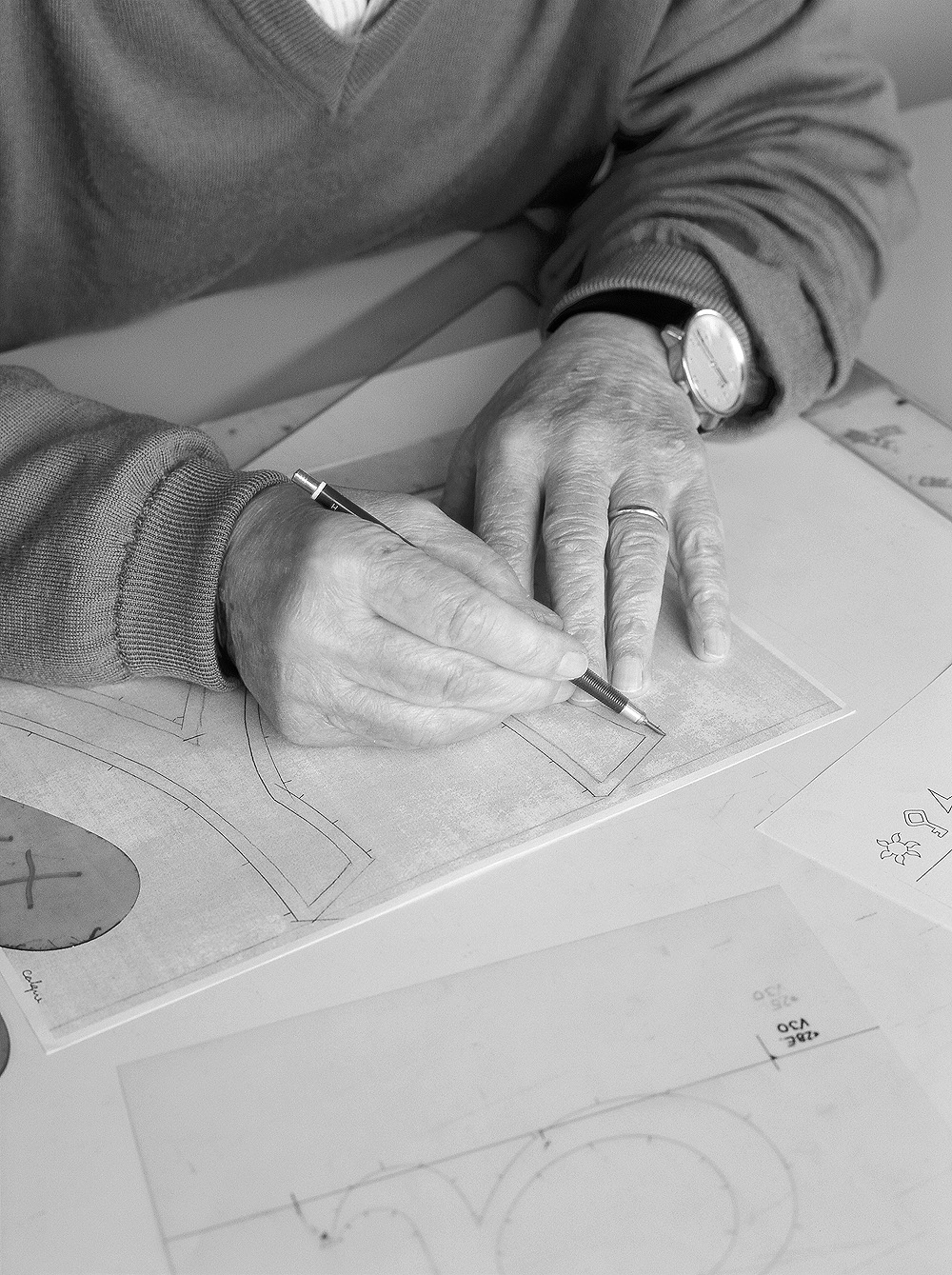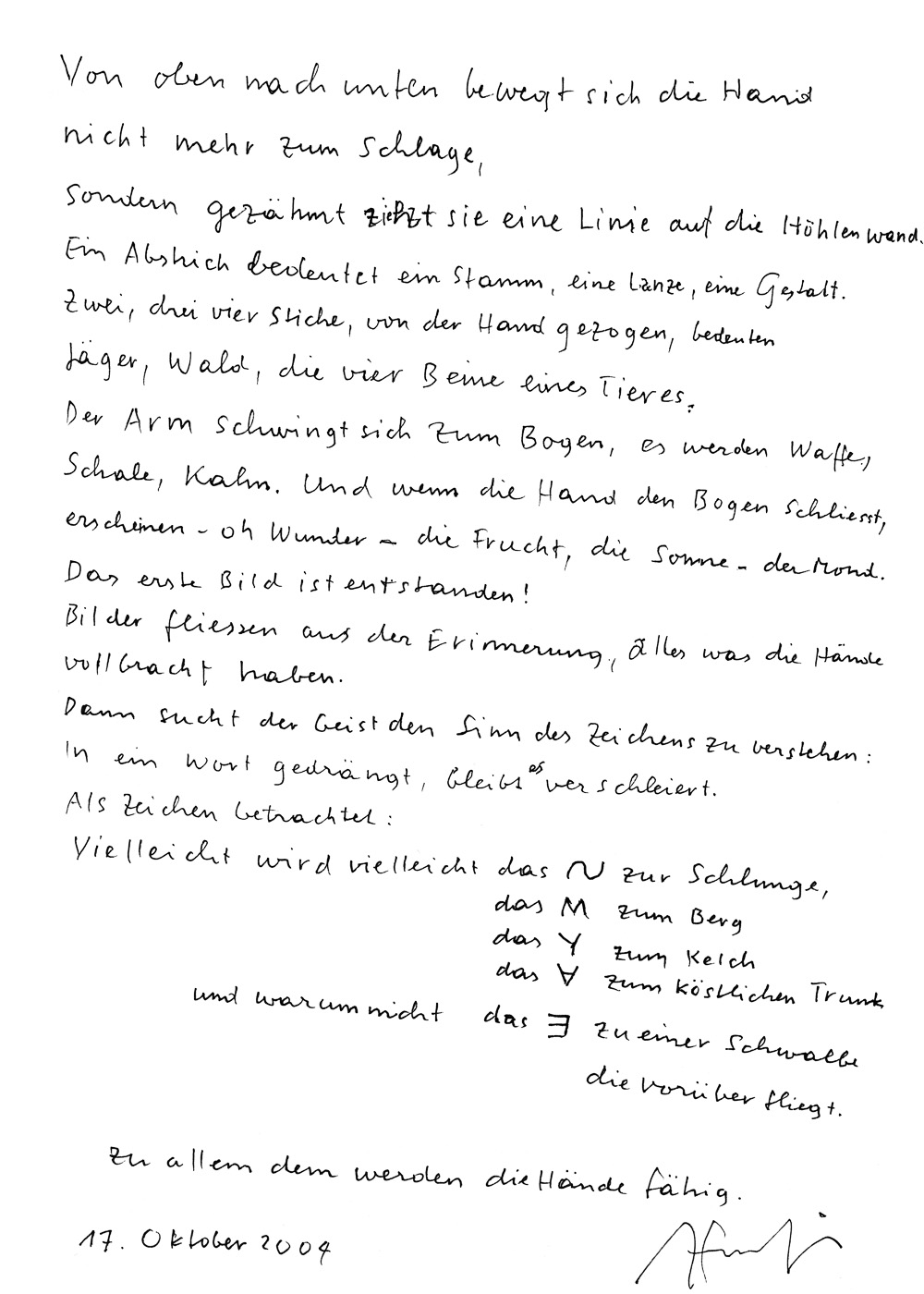
Adrian Frutiger
* 03 Dec 1936, † 11 Sep 2008, Swiss, Typeface designer
I pay Adrian Frutiger a visit at his home close to Bern in Switzerland. I am amazed about his activity and enthusiasm for new projects and ideas. He shows me his atelier where he still works the old-school way, with pencil and paper.
Adrian Frutiger was born 1928 in Unterseen, Bern, the son of a weaver. Showing a clear interest in art in his early life, he was encouraged by his father and teachers to pursue an apprenticeship rather than pure art. At the age of sixteen, he was apprenticed for four years as a compositor at the Otto Schlaefli printing house in Interlaken.
Frutiger became one of the most famous typeface designer and influenced the direction of type design in the second half of the 20th century and into the 21st. Frutiger's most famous designs, Univers, Frutiger and Avenir, are landmark sans-serif families spanning the three main genres of sans-serif typefaces: neogrotesque, humanist and geometric. Univers was notable for being one of the first sans-serif faces to form a consistent but wide-ranging family, across a range of widths and weights. Frutiger described creating sans-serif types as his "main life's work," partially due to the difficulty in designing them compared to serif fonts.
Frutiger married Paulette Flückiger in 1952, who died in 1954 after the birth of their son Stéphane. He remarried the theologian Simone Bickel in 1955. They had two daughters, who both experienced mental health problems and committed suicide as adolescents. Disappointed by the standard of mental health care at the time, Frutiger and his wife founded the ‘Fondation Adrian et Simone Frutiger’ to fund psychology and neuroscience research and developments in mental health support.
Frutiger spent most of his professional career working in Paris and living in France, returning to Switzerland later in life. He died on September 10, 2015 at the age of 87 in Switzerland.
Source: Wikipedia



Transcript:
Von oben nach unten bewegt sich die Hand nicht mehr zum Schlage, sondern gezähmt zieht sie eine Linie auf die Höhlenwand. Ein Abstrich bedeutet ein Stamm, eine Lanze, eine Gestalt. Zwei, drei, vier Striche, von Hand gezogen, bedeuten Jäger, Wald, die vier Beine eines Tieres. Der Arm schwingt sich zum Bogen, es werden Waffe, Schale, Kahn. Und wenn die Hand den Bogen schliesst, erscheinen – oh Wunder – die Frucht, die Sonne, der Mond. Das erste Bild ist entstanden! Bilder fliessen aus der Erinnerung, alles, was die Hände vollbracht haben. Dann sucht der Geist den Sinn des Zeichens zu verstehen: In ein Wort gedrängt, bleibt es verschleiert. Als Zeichen betrachtet: Vielleicht wird vielleicht das ~ zur Schlange, das M zum Berg, das Y zum Kelch, das ∀ zum köstlichen Trunk, und warum nicht das ∃ zu einer Schwalbe, die vorüberfliegt. Zu allem dem werden die Hände fähig.
